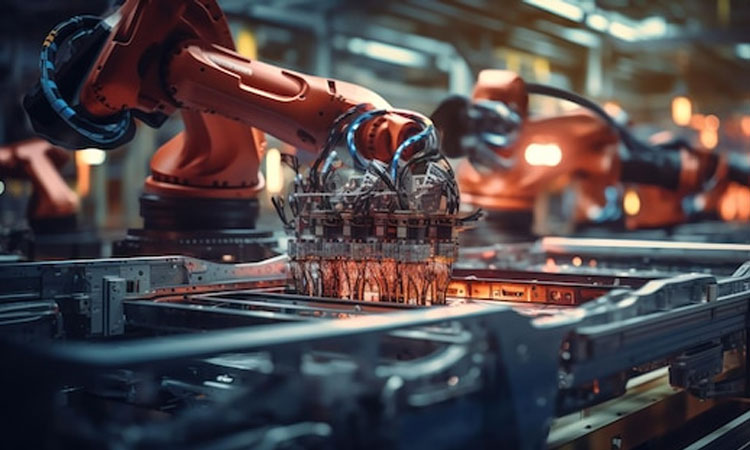The forging and casting industries are undergoing a significant transformation with the integration of automation and robotics. As manufacturers seek to enhance efficiency, reduce costs, and improve quality, the adoption of advanced technologies such as collaborative robots, automated inspection systems, and robotic arms is revolutionizing traditional processes. This shift not only streamlines operations but also positions companies to compete more effectively in an increasingly demanding market.
Collaborative Robots: Enhancing Human-Machine Interaction
One of the most exciting developments in automation is the introduction of collaborative robots, or cobots, into forging and casting facilities. Unlike traditional industrial robots, which often operate in isolation for safety reasons, cobots are designed to work alongside human operators. This integration allows for a more flexible and adaptive workforce. Cobots can handle repetitive or dangerous tasks, such as lifting heavy materials or performing precision tasks, freeing skilled workers to focus on more complex responsibilities that require human judgment and expertise. The synergy between humans and machines not only improves productivity but also enhances workplace safety.
Automated Inspection Systems: Ensuring Quality Control
Quality control is paramount in forging and casting processes, where the integrity of components is critical. The integration of automated inspection systems, including vision systems and sensors, allows manufacturers to maintain stringent quality standards with greater consistency and speed. These systems can detect defects or irregularities in real time, enabling immediate corrective action. By automating inspection processes, companies can significantly reduce the likelihood of errors and ensure that only high-quality products reach the market. This proactive approach to quality management helps build customer trust and satisfaction.
Robotic Arms: Boosting Speed and Efficiency
Robotic arms are another key player in the automation landscape of forging and casting. These versatile machines can perform a wide range of tasks, from material handling and assembly to welding and finishing. Their ability to operate continuously without fatigue allows for higher production rates and shorter lead times. Furthermore, robotic arms can be programmed to execute precise movements, ensuring uniformity in production and reducing waste. As a result, manufacturers can achieve higher output levels while maintaining quality, ultimately enhancing their competitiveness.
The Benefits of Automation
The integration of automation and robotics in forging and casting offers numerous benefits. Enhanced labor efficiency is one of the most significant advantages; companies can achieve more with fewer resources. Automation also leads to improved operational speed, allowing manufacturers to respond quickly to market demands and reduce time-to-market for new products.
Moreover, the combination of automation with data analytics enables manufacturers to optimize their processes continually. By collecting and analyzing data from automated systems, companies can identify bottlenecks, predict maintenance needs, and make informed decisions to enhance overall productivity.
The rise of automation in the forging and casting industries is changing the game, with robotics playing a central role in this transformation. By adopting collaborative robots, automated inspection systems, and robotic arms, manufacturers can achieve higher quality, increased efficiency, and greater flexibility in their operations. As the industry continues to evolve, embracing automation will be essential for companies looking to thrive in a competitive landscape, ensuring they remain at the forefront of innovation while meeting the demands of their customers.
Image courtesy : Design by Freepik


